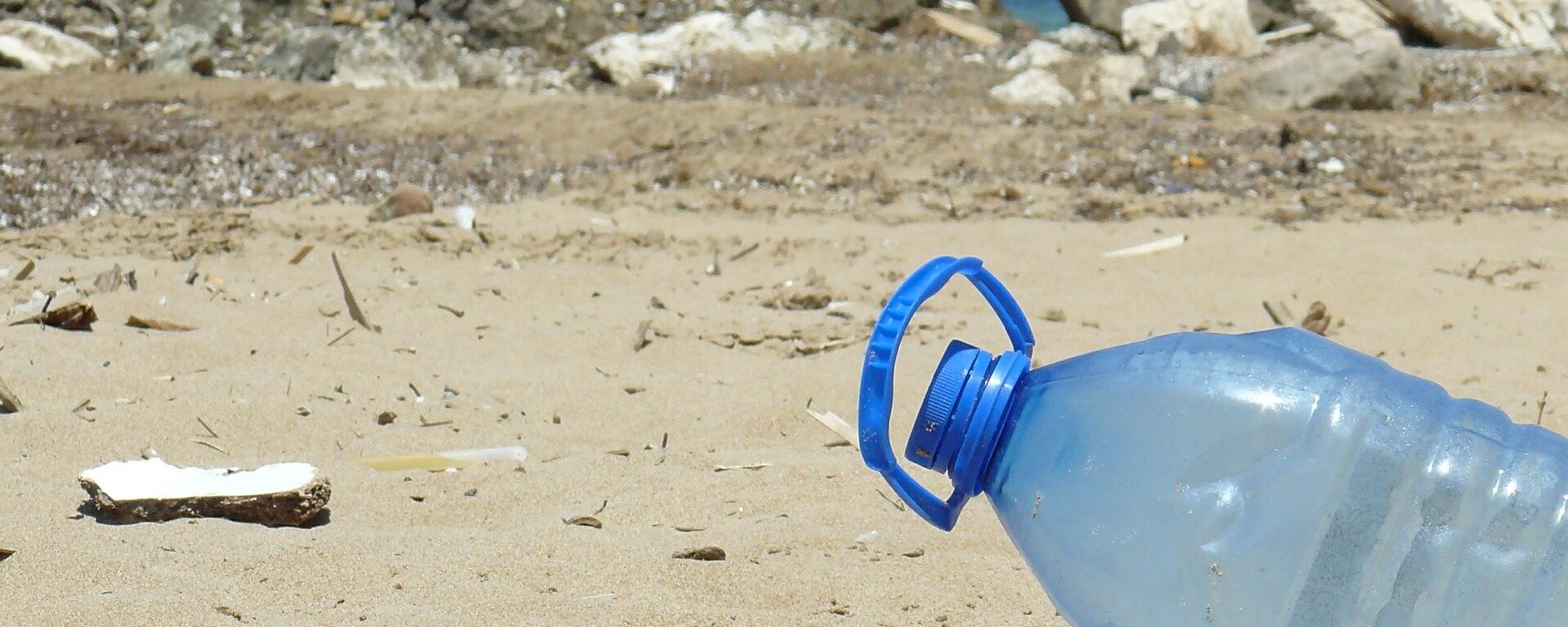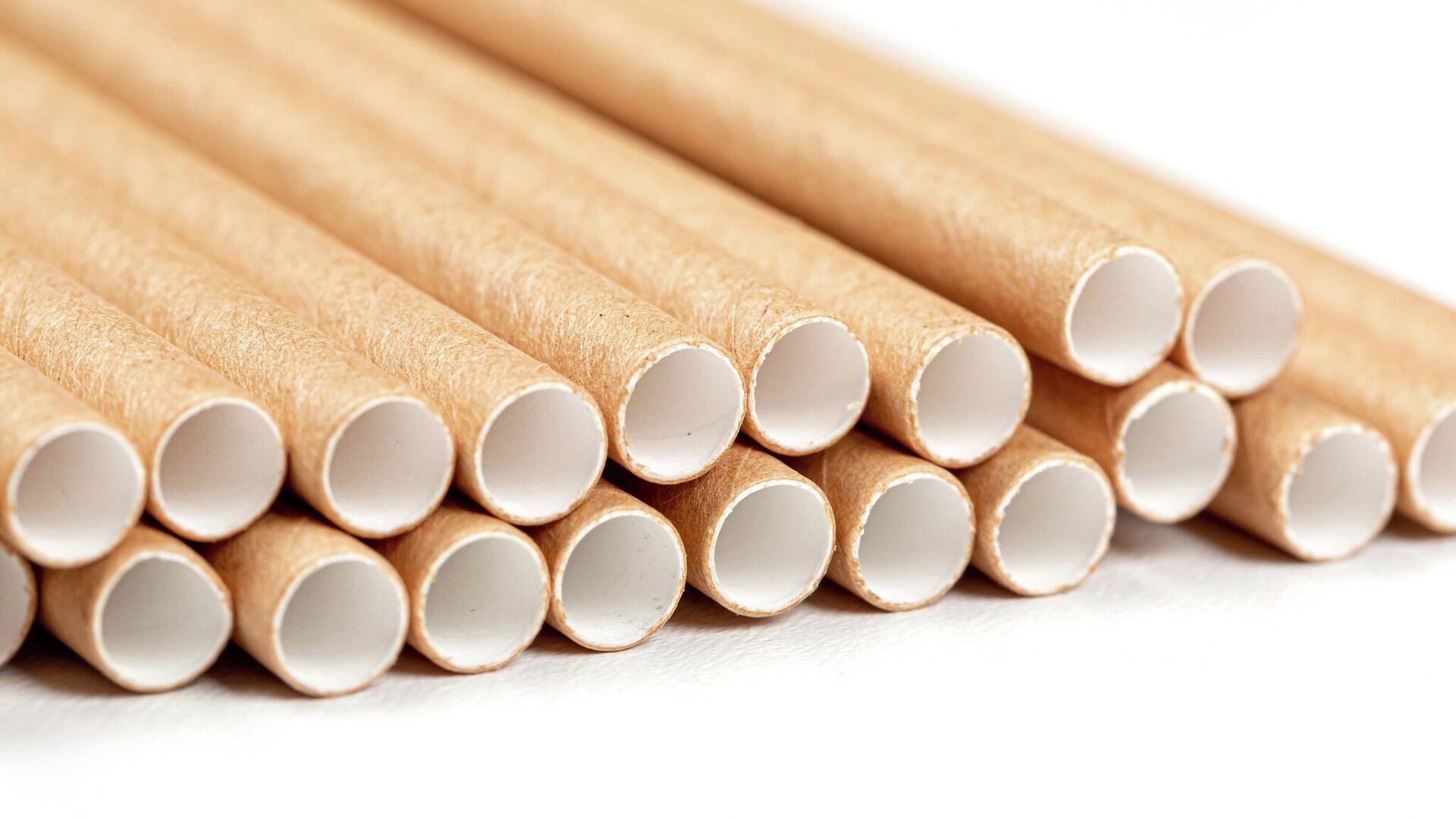https://sputnikglobe.com/20230826/paper-straws-contain-more-forever-chemicals-than-plastic-study-finds-1112901774.html
Paper Straws Contain More ‘Forever Chemicals’ Than Plastic, Study Finds
Paper Straws Contain More ‘Forever Chemicals’ Than Plastic, Study Finds
Sputnik International
A new study shows that "eco-friendly" paper and bamboo straws actually contain more PFAS, also known as "forever chemicals" than their plastic counterparts.
2023-08-26T03:02+0000
2023-08-26T03:02+0000
2023-08-26T03:01+0000
world
per- and polyfluorinated substances (pfas)
food and drug administration (fda)
straws
plastic
plastic waste
plastic pollution
plastic ocean
https://cdn1.img.sputnikglobe.com/img/07e7/08/1a/1112901218_0:107:2047:1258_1920x0_80_0_0_010ca04a050b877dc936ad077e73d90f.jpg
A new study has implied that plastic straws may not be as eco-friendly as previously thought and in some ways, they may be worse for the environment and consumers than their plastic counterparts.The Thursday-published study examined straws made from different materials from 39 different brands and found that PFAS [Per- and Polyfluorinated Substances] chemicals, commonly called “forever chemicals” due to their extremely long half-life and ability to travel up the food chain, are more frequently found in so-called “eco-friendly” straws made out of paper and bamboo.Paper straws were the worst offenders, with PFAS being found in 90% of the straws tested during the study. Bamboo came in second with PFAS being found 80% of the time. Meanwhile, plastic straws were found to have PFAS 75% of the time. Next were glass straws, which had PFAS in 40% of the samples tested, whereas stainless steel straws performed best, with no PFAS being found in any of the samples.The most common PFAS found was perfluorooctanoic acid, which has been banned in most countries but still finds its way into products sold in the United States, particularly in food packaging. The US is currently in a “phase-out” of PFAS instituted by the Food and Drug Administration (FDA) which is scheduled to end in 2024. However, the agency estimates it may take another 18 months after that date to exhaust current stocks.Also found in the straws were trifluoroacetic acid and trifluoromethanesulfonic acid, two chemicals that are water soluble, meaning chemicals would likely seep into drinks.It is not clear how the PFAS ended up in the straws, but PFAS have been used to repel water in products since the 1940s and were found in every brand, suggesting their addition may have been intentional.Because of PFAS’ durability, other possible explanations include that they were in the soil the plants were grown in or in the water used during the manufacturing process.Goffen suggested the so-called “eco-friendly” straws could be an environmental “paper tiger” and suggested consumers avoid them. “We did not detect any PFAS in stainless-steel straws, so I would advise consumers to use this type of straw — or just avoid using straws at all,” he said.However, it is worth pointing out that the primary reason for banning plastic straws was not to prevent PFAS from entering the environment, or even stop plastic in general from entering the environment.There are specific issues with plastic straws that make them a focus of environmental groups, with the most obvious being that recycling them is very difficult. However, on some level that is true of all plastic, especially the polypropylene plastic favored by straw manufacturers, but straws in particular are too small and light to make it through the recycling sorting machine. Often, they are put into the trash or contaminate other plastic recycling efforts.The larger reason is that straws are typically mistaken for food by marine life and their unique shape can result in animals choking or otherwise being harmed by them. In 2015, an image of a sea turtle with a straw stuck in its nostril went viral and gave a large boost to the anti-straw movement.Still, it is indisputable that plastic straws are only a small part of the plastics polluting our oceans: Of the 8 million tons of plastic that enters our oceans every year, only 0.025% of it comes from plastic straws, according to a 2018 study. The Thursday study also shows it may not be beneficial for consumer health either.The study was published in the Journal of Food Additives & Contaminants.
https://sputnikglobe.com/20230121/plastic-to-outnumber-fish-in-ocean-by-2050-at-current-consumption-rate-russian-govt-1106550817.html
https://sputnikglobe.com/20230418/great-pacific-garbage-patch-perpetual-ocean-roaming-plastic-trash-home-to-new-ecosphere-1109616007.html
Sputnik International
feedback@sputniknews.com
+74956456601
MIA „Rossiya Segodnya“
2023
News
en_EN
Sputnik International
feedback@sputniknews.com
+74956456601
MIA „Rossiya Segodnya“
Sputnik International
feedback@sputniknews.com
+74956456601
MIA „Rossiya Segodnya“
plastic straw ban, paper straws, forever chemicals, bamboo straws, what straws are best, what kind of straws are best for the environment, what straws are best for health
plastic straw ban, paper straws, forever chemicals, bamboo straws, what straws are best, what kind of straws are best for the environment, what straws are best for health
Paper Straws Contain More ‘Forever Chemicals’ Than Plastic, Study Finds
Multiple states, including New York, California, New Jersey, Oregon, Vermont and Washington have banned plastic straws, in addition to several cities like Washington, DC, and Atlanta. Multiple restaurant chains have also decided to stop using plastic straws voluntarily.
A new study has implied that plastic straws may not be as eco-friendly as previously thought and in some ways, they may be worse for the environment and consumers than their plastic counterparts.
The Thursday-published study examined straws made from different materials from 39 different brands and found that PFAS [Per- and Polyfluorinated Substances] chemicals, commonly called “forever chemicals” due to their extremely long half-life and ability to travel up the food chain, are more frequently found in so-called “eco-friendly” straws made out of paper and bamboo.
Paper straws were the worst offenders, with PFAS being found in 90% of the straws tested during the study. Bamboo came in second with PFAS being found 80% of the time. Meanwhile, plastic straws were found to have PFAS 75% of the time. Next were glass straws, which had PFAS in 40% of the samples tested, whereas stainless steel straws performed best, with no PFAS being found in any of the samples.
The most common PFAS found was perfluorooctanoic acid, which has been banned in most countries but still finds its way into products sold in the United States, particularly in food packaging. The US is currently in a “phase-out” of PFAS instituted by the Food and Drug Administration (FDA) which is scheduled to end in 2024. However, the agency estimates it may take another 18 months after that date to exhaust current stocks.

21 January 2023, 10:29 GMT
Also found in the straws were trifluoroacetic acid and trifluoromethanesulfonic acid, two chemicals that are water soluble, meaning chemicals would likely seep into drinks.
“The presence of PFAS in paper and bamboo straws shows they are not necessarily biodegradable,” warned Thimo Groffen, the study’s author in a statement.
It is not clear how the PFAS ended up in the straws, but PFAS have been used to repel water in products since the 1940s and were found in every brand, suggesting their addition may have been intentional.
Because of PFAS’ durability, other possible explanations include that they were in the soil the plants were grown in or in the water used during the manufacturing process.
“Straws made from plant-based materials, such as paper and bamboo, are often advertised as being more sustainable and eco-friendly than those made from plastic,” Goffen said “However, the presence of PFAS in these straws means that’s not necessarily true.”
Goffen suggested the so-called “eco-friendly” straws could be an environmental “paper tiger” and suggested consumers avoid them. “We did not detect any PFAS in stainless-steel straws, so I would advise consumers to use this type of straw — or just avoid using straws at all,” he said.
However, it is worth pointing out that the primary reason for banning plastic straws was not to prevent PFAS from entering the environment, or even stop plastic in general from entering the environment.
There are specific issues with plastic straws that make them a focus of environmental groups, with the most obvious being that recycling them is very difficult.
However, on some level that is true of all plastic, especially the polypropylene plastic favored by straw manufacturers, but straws in particular are too small and light to make it through the recycling sorting machine. Often, they are put into the trash or contaminate other plastic recycling efforts.
The larger reason is that straws are typically mistaken for food by marine life and their unique shape can result in animals choking or otherwise being harmed by them. In 2015, an image of a sea turtle with a straw stuck in its nostril went viral and gave a large boost to the anti-straw movement.
Still, it is indisputable that plastic straws are only a small part of the plastics polluting our oceans: Of the 8 million tons of plastic that enters our oceans every year, only 0.025% of it comes from plastic straws, according to a 2018 study. The Thursday study also shows it may not be beneficial for consumer health either.
The study was
published in the Journal of Food Additives & Contaminants.




